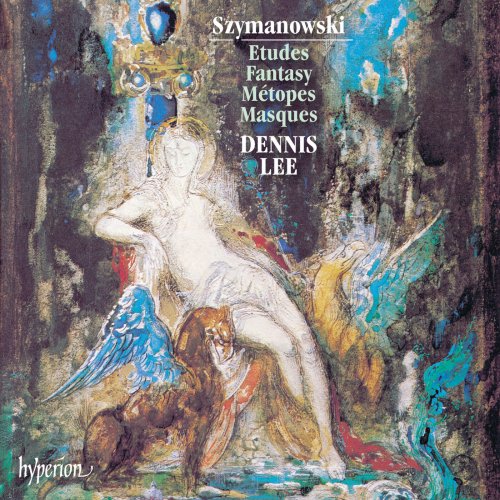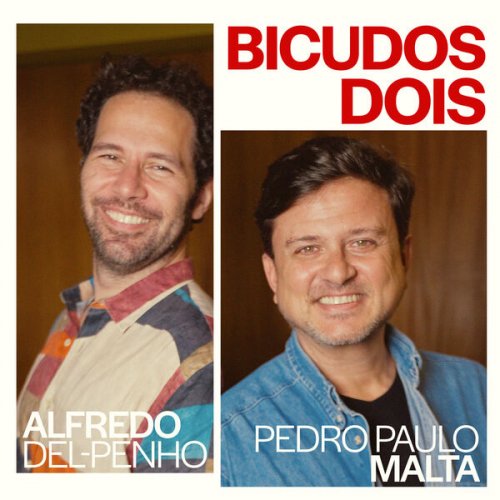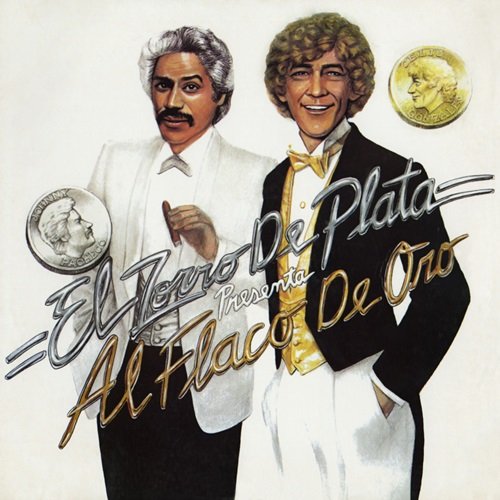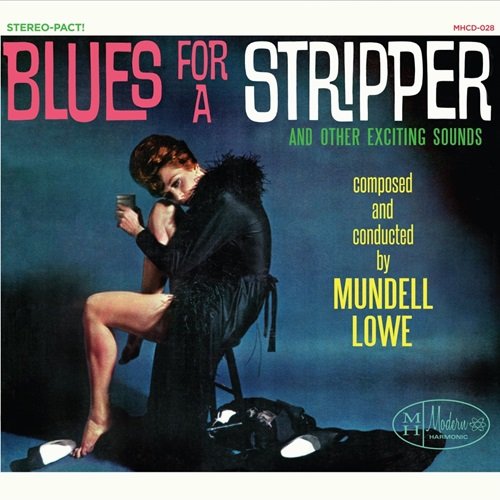Dennis Lee - Szymanowski: Piano Music (1991)

Artist: Dennis Lee
Title: Szymanowski: Piano Music
Year Of Release: 1991
Label: Hyperion
Genre: Classical Piano
Quality: flac lossless (tracks) +Booklet
Total Time: 01:03:52
Total Size: 201 mb
WebSite: Album Preview
TracklistTitle: Szymanowski: Piano Music
Year Of Release: 1991
Label: Hyperion
Genre: Classical Piano
Quality: flac lossless (tracks) +Booklet
Total Time: 01:03:52
Total Size: 201 mb
WebSite: Album Preview
01. 4 Etudes, Op. 4: I. Allegro moderato in E-Flat Minor
02. 4 Etudes, Op. 4: II. Allegro molto in G-Flat Major
03. 4 Etudes, Op. 4: III. Andante in modo d'una canzone in B-Flat Minor
04. 4 Etudes, Op. 4: IV. Allegro in C Major
05. Métopes, Op. 29: I. L'Île des Sirènes
06. Métopes, Op. 29: II. Calypso
07. Métopes, Op. 29: III. Nausicaa
08. Fantasy in F Minor, Op. 14: I. Grave
09. Fantasy in F Minor, Op. 14: II. Non troppo allegro, ma molto passionato e affettuoso
10. Fantasy in F Minor, Op. 14: III. Allegro molto, deciso. Energico
11. Masques, Op. 34: I. Shéhérazade
12. Masques, Op. 34: II. Tantris le Bouffon
13. Masques, Op. 34: III. Sérénade de Don Juan
At the end of his life, just before a recital by Artur Rubinstein, Szymanowski told the pianist that he wanted a seat where he could be invisible. In a sense he has been sitting there ever since, though there have been signs in recent years that his uniqueness as a composer is increasingly recognized. The poverty of indigenous Polish traditions did indeed force him to look outside his homeland, and in some respects his development can be viewed as a series of responses—some muted, some not so muted—to German, French and Eastern European styles respectively. Yet the best of his music transcends these influences, forging a highly personal sound world characterised by an intensely expressive mystical fervour—rich, opulent and exotic.
The Four Etudes, Opus 4, date from Szymanowski’s early student days in Warsaw (1900/02), when his piano music responded above all to Chopin. Yet we need only hear a few bars of the first study, with its Brahmsian parallel sixths, or of the last study with its undisguised Wagnerian progressions, to realise that the composer was immersed in German Classical and Romantic music almost as much as in Chopin. The second and third studies suggest yet another influence. They are remarkably close in detailed phraseology to the tenth and eleventh of Scriabin’s Op 8 studies—so close indeed that it is tempting to suggest that Szymanowski may have modelled his pieces on Scriabin, though there is no direct evidence of this. (It was the third study, incidentally, which Paderewski played all over Europe in the early years of the century, achieving a measure of recognition for the young composer. Szymanowski himself had mixed feelings about such instant success. ‘It is no good thing’, he remarked wryly, ‘to write one’s Ninth Symphony at such an early age.’)
The Fantasy, Opus 14, also dates from Szymanowski’s early formative years. Completed in Warsaw in 1905, it was a response first and foremost to the music of Liszt, who also had a passing influence on Op 4 No 1. On one level the influence is revealed in the texture and figuration of the Fantasy, certainly the most complex and virtuosic yet attempted by Szymanowski. Moreover, as in Liszt, the arpeggiated cascades of sound are often emancipated from an accompanimental status, carrying the music towards powerful climaxes with an impassioned rhetoric which disguises occasional poverty in the basic material. Even the more delicate textures of the slow section recall Liszt rather than Chopin. But the influence goes yet deeper. The work is in effect a tripartite cyclic structure employing two principal thematic elements throughout, with the final section synthesizing earlier material. Admittedly, transformations are minimal but there can be little doubt that Liszt acted as the formal as well as the stylistic model.
The three poems comprising Métopes were composed in 1915 and they stand at the threshold of Szymanowski’s full maturity as a composer, when he rejected German influences in favour of a highly personal ‘impressionist’ manner. Like the metopes in the friezes of Doric architecture, Szymanowski’s pieces are intended to outline stages in a history, here based on Homer’s Odyssey. The idea was probably suggested by the metopes from the temple of Selinunt which the composer saw while visiting the museum in Palermo the previous year. The first of the three pieces, ‘Isle of the Sirens’, takes much of its musical detail from the mythological source, not only in the more and more insistent lullaby theme which runs through the music but in configurations which presumably reflect the double flute and lyre associated in Homer with the Sirens. Some of these patterns also suggest bird calls, reminding us that the Sirens were half bird and half woman.
‘Calypso’, the second of the Métopes, portrays the daughter of Atlas who personifies the depths of the sea and who kept Odysseus on the island of Ortygia for seven years. A recurring refrain-like melody in the composer’s favourite ‘narrative’ manner—a 6/8 metre with dotted rhythm—is surrounded by a ‘bitonality’ of white and black notes evoking the sea. The indebtedness to Debussy (Brouillards) and Ravel (Jeux d’eau) will be apparent.
The relatively static character of these two pieces is balanced by the third of the Métopes, ‘Nausicaa’, depicting the dancing of Nausicaa and the Phaecian maidens who discover Odysseus after his shipwreck. Stylizations of the dance are common in middle-period Szymanowski (many pieces are about the dance) and ‘Nausicaa’ is closely related to several dance pieces from earlier song-cycles. As in these pieces, the element of stylization grows stronger as the piece develops, with subtle rhythmic dislocations of the basic metre, so that by the end the dance features have been submerged totally. There are closing cyclic references to the lyre-like patterns from ‘Isle of the Sirens’ and to the white-note/black-note figuration and refrain melody from ‘Calypso’.
Szymanowski wrote Masques during 1915/16. They are really short tone poems for piano, with elaborately sectional formal schemes reflecting the unfolding narratives. The first piece depicts the familiar Sheherazade of the 1001 Nights, in many variations of a single seductive mood. The languorous introductory bars reveal Szymanowski at his most Scriabinesque, recalling specifically parts of the introduction to Scriabin’s Fifth Piano Sonata. A passage of capricious, ‘fantastic’ character, with finely-wrought textural detail, leads to the first of the two main themes of ‘Shéhérazade’. The second ‘love’ theme, of a more urgent, passionate character, is the most important song of the piece and it develops to a major climax before the calm middle section. A final ‘dance’ presents transformations of the second theme, building to a thrilling Scriabinesque climax of multiple trills.
‘Tantris the Clown’ is based on Ernst Hardt’s distortion of the Tristan legend and it clearly aims to depict in musical terms the grotesque antics of a crazed lover. Analogies with Pierrot Lunaire are tempting, but in purely musical terms the piece is closer to Ravel’s Alborado del gracioso. Amidst the crisp rhythmic patterns and points of sharp dissonance, both the ‘love’ theme from ‘Shéhérazade’ and a new theme are subject to wicked distortion. Bitonal elements play an important part in this distortion and in the harmony of the piece as a whole and they are prominent in the final cadence.
‘Don Juan’s Serenade’ opens with an extended passage of quasi-improvised character, promoting the required atmosphere of fantasy, but at the same time establishing some of the building blocks of the piece, from the characteristic white-note/black-note bitonality to the thematic cell out of which the main melody, with its Spanish-Arabic character, eventually grows. The melody itself comprises two separate components and the main body of the piece consists of alternating transformations of them. The serenade grows more impassioned and urgent as it develops, eventually leading smoothly to a return of the introductory cadenza.
![Grises - Eveil (2025) [Hi-Res] Grises - Eveil (2025) [Hi-Res]](https://www.dibpic.com/uploads/posts/2025-12/1766127968_cover.jpg)
![Ready Player 3 - Ready Player 3 (2025) [Hi-Res] Ready Player 3 - Ready Player 3 (2025) [Hi-Res]](https://www.dibpic.com/uploads/posts/2025-12/1766128773_cover.jpg)

![Demo Rumudo - Second Nature (2025) [Hi-Res] Demo Rumudo - Second Nature (2025) [Hi-Res]](https://www.dibpic.com/uploads/posts/2025-12/1765883076_cover.jpg)



![RAS - Rød i Blå (2025) [Hi-Res] RAS - Rød i Blå (2025) [Hi-Res]](https://www.dibpic.com/uploads/posts/2025-12/1765847447_s09xuo23tcu1a_600.jpg)
